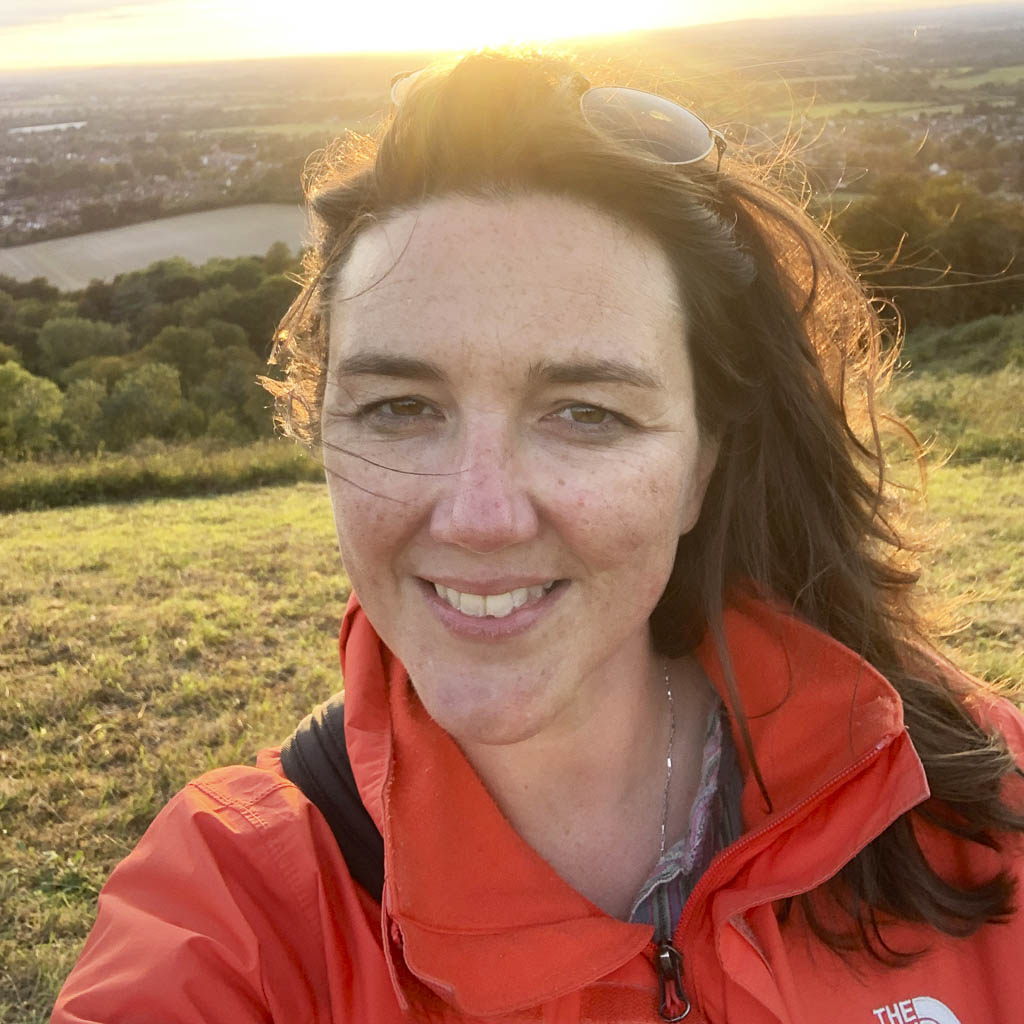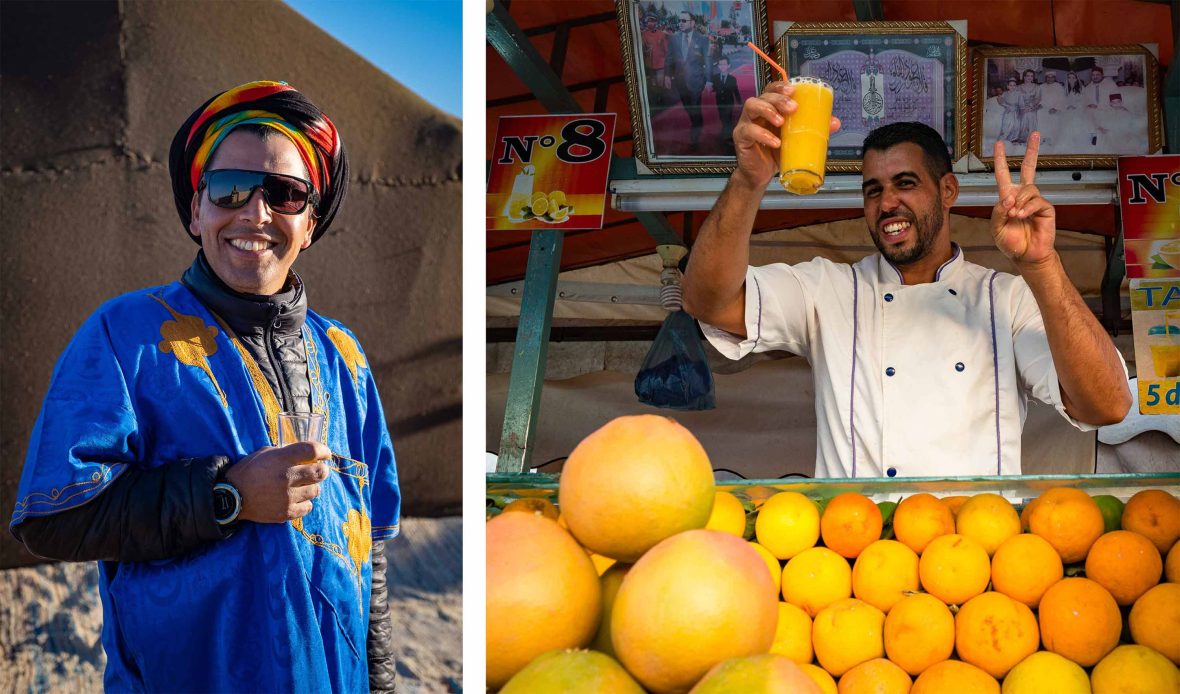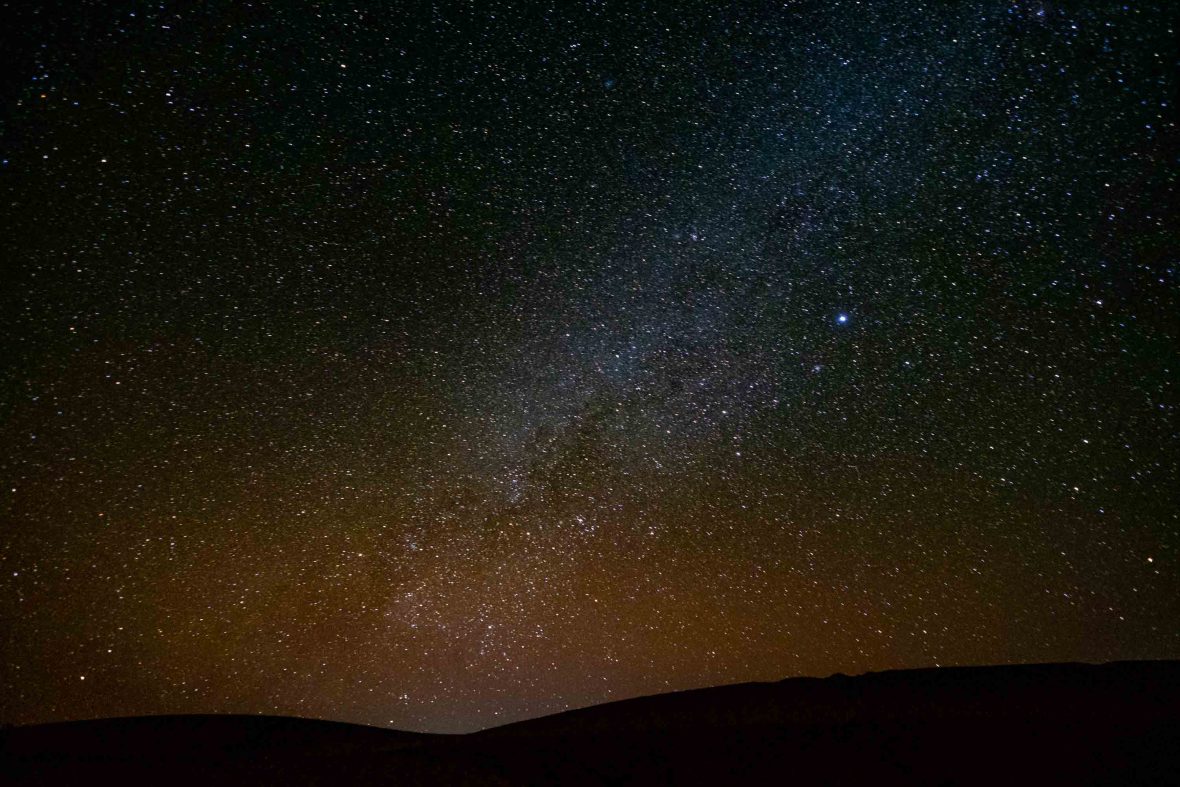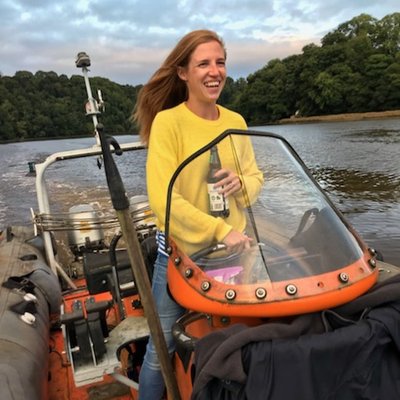
On a cycling trip around Morocco, which she reached by traveling overland from England, writer and photographer Diana Jarvis found plenty to slow down for. She reflects on the true value and meaning of unhurried, sustainable travel.


On a cycling trip around Morocco, which she reached by traveling overland from England, writer and photographer Diana Jarvis found plenty to slow down for. She reflects on the true value and meaning of unhurried, sustainable travel.
“Riding a bike is like life. There are the ups and the downs. And you can’t have the downs without the ups,” says Hicham.
We’re in a basement room in a Marrakesh hotel and I’m exhausted after seven days traveling overland through France and Spain by train, bus and boat. I’ve just met Hicham Bouhrazen, our Amazigh (Berber) guide along with the 13 people I’ll be spending the next two weeks with, cycling around Morocco.
I liked Hicham’s twist on the age-old adage of no ups without downs, but I hadn’t really thought about the uphills. I’d envisaged the wind in my hair while gently pedaling along undulating paths, freewheeling through glorious scenery, connecting with nature and stopping often to photograph the plants and landscapes. Cycling is surely the epitome of slow travel, right?
Hicham handed us a topographical map of the routes we’d be taking, but it wasn’t until several days later, red-faced, puffing, and inching my way up a steep incline in the lowest gear in the Rif Mountains that it dawned on me that they’re the Rif Mountains not the Rif Hills or Flats. Clearly the unfittest person in the group, I was barely noticing the roadside vegetation or village architecture, let alone taking any photos.
This wasn’t the first time on the trip I’d questioned my perception and planning skills versus the reality of sustainable and so-called slow travel. The seven days I’d taken to reach Morocco had passed in a blur of high-speed AVE and Renfe trains, noisy city-center hotels and rapid explorations of places (Marseille, Arles, Figueres, Malaga, Tarifa and Tangier) that deserved more than 12 hours of my time. The ‘romance’ of rail travel it wasn’t.
The Rif ride wasn’t the first cycle on the itinerary. We’d eased in gently with a 20-mile circuit on the flat terrain around Marrakesh. I was impressed with the smooth tarmac and clearly marked cycle lanes on the dual carriageways of the city’s outskirts.
… The less there was to distract my mind, the more I began to see: The patterns the wind drew into the sand, tiny wisps of hardy plants poking through sand, tracks of birds and desert creatures.
We swooped into the smaller streets of the medina, keeping pace while narrowly wheeling between horse-drawn carriages, sleek modern parked cars, potholes, ambivalent pedestrians, and stalls selling spices, leather goods and French pastries—although I can only recollect the smells, with my concentration firmly fixed on the road. It was no mean feat, but with Hicham at the front of our cycle convoy and fellow guide Hassan at the rear, we were safe from a wrong turn.
We paused for a freshly squeezed juice in the Jemaa el-Fna, Marrakesh’s chaotic main square. I was bone-shaken from the overstimulating ride but, amid the snake charmers, hawkers, henna tattooists, shorts-and-T-shirt-clad tourists, and well-dressed Marakshis, I felt present and in the moment for the first time in months.
Our route around Morocco first took us by sleeper train from the pinky hues of Marrakesh up to the gleaming white Mediterranean port city of Tangier then onto the undulating coast road, passing enticing sandy beaches and up to Cape Spartel, where the Mediterranean Sea and the Atlantic Ocean meet.
Other than a wooden sign declaring the significance of the tidal confluence, there was little to discern from looking at the waves. The meeting of the two bodies of water is much more prominent on the Spanish side in Tarifa. I’d been there only days before, where a jetty to a tiny island is flanked on one side by the wild Atlantic winds and gentle, rippling waters of the Med on the other.
With the aid of the support vehicle, we traveled through the northern part of Morocco, with a ride-free day to explore both the blue-painted streets of Chefchaouen, and the ancient narrow maze-like medina in Fez. We then turned southwards to a wild-west style ranch in Midelt before heading into the Sahara desert at Merzouga.
Subsequent days passed in a similar pattern. We arose before the sun, ate a rapid breakfast of strong coffee, eggs and pancake-like flatbread with apricot jam or amlou (a more-ish nut butter made from almonds, argan oil and honey) and set off in the support vehicle to the start of the ride.
We’d cycle around 40 to 50 miles in a day, mostly on well-surfaced main roads. Although I’d feel the tiredness from multiple hours in the saddle, my calves and thighs never grumbled in pain.
Sturdy Cannondale road bikes were provided and, thanks to bike aficionados Hicham and Hassan, and the support crew of Hamid and Omar, a flat tyre or a sticky gear was instantly fixed. There was certainly no need to worry about mechanical problems getting in the way of a good ride.

When I think back to those journeys, my memories are conflated. I can feel the speed of the world whistling past my ears as I recall fragments of rides: A long switchback uphill slog passing fertile farmland guarded by sedate dogs catching a scent and gently nosing the air; school kids who insisted on high-fiving every one of us; us taking a break in the midday sun under an olive grove with snacks of sticky medjool dates, almonds and impossibly lurid candied kiwi and strawberries.
And I recall the steep downhill ride against a headwind so strong that it still meant pedalling against the wind and no freewheeling; a deeply pot-holed road alongside a trickle of a river that’s clearly a torrent at other times of the year; and a leathery farmer in a too-warm djellaba (outer robe) playing tunes on a wooden flute.
A week of daily cycling, plus locally grown clementines for snacks, freshly prepared tagines for meals, no alcohol, dry mountain air to breathe and endless vitamin D from the sunshine, was proving beneficial.
It wasn’t until I was on the back of a camel lurching through the dunes at Merzouga, in Morroco’s southeast, close to the border with Algeria and on the edge of the Sahara that I finally began to feel some sense of slowness creeping into my being. This was the pace I had been imagining, as we headed off into the wild nothingness. There was little to see; just neverending honey-colored dunes and deep black shadows tracing their shape. Yet the less there was to distract my mind, the more I began to see: The patterns the wind drew into the sand, tiny wisps of hardy plants poking through sand, tracks of birds and desert creatures.
There had been a brief moment earlier in the trip on the boat between Tarifa and Tangier that had felt similar. The liminal space between Europe and Africa, with its incremental gradations of grays, blues, sea sprays and mist, was the perfect canvas to deflect my mind into an inward state of reflection. A ricocheting downward drift into slowness. The same thing happened here. Was it the boat or the backdrop that did it?
Time here in Merzouga was a turning point. I slept out under the stars that night, waking intermittently and startled at the trajectory of the dot-to-dot constellations across the inky blackness.
A week of daily cycling, plus locally grown clementines for snacks, freshly prepared tagines for meals, no alcohol, dry mountain air to breathe and endless vitamin D from the sunshine, was proving beneficial. I was developing new muscles and my body was learning how better to circulate the oxygen it needed to get me up those rocky red High Atlas mountains.

In those final days, we really learned the meaning of those ups and downs Hicham had mentioned. From the Tisdrine mountain pass in the Dadès Valley, with its tightly curled hairpin turns and precipitous drops, it was a steep downhill ride. Yet I had my brakes on throughout, for fear of tumbling over the precipice. For our final uphill ride from Aït Benhaddou to the Ounila-Tal viewpoint overlooking the Ounila valley in the High Atlas north of Aït Benhaddou, a slow and steady pace meant I had time to spot the goats tumbling down the hillside and I could hear the call-to-prayers echoing around the valley.
At times, this journey didn’t feel like slow travel at all; racing across the country as fast as my legs would take me and using up all my mental capacity to just keep on going. But now I’ve had time for the memories to settle, I realize I saw and felt more than if I’d been zipping between must-see highlight to ‘hidden gem’ in a tourist bus.
Even the rapid journey across France and Spain which, at the time felt like breakneck speed, makes more sense on reflection, as I recall the incremental changes in the landscape, architecture, language and food that led me from my home to somewhere that was, psychologically, so very far removed. I don’t think slow travel is just the mode of transport you choose; it’s also about slowing your mind down, savoring the details of what you’re experiencing and making a deeper connection between your everyday life and the faraway places that mostly linger in your imagination.
____
The writer self-funded her Cycle Morocco trip with Intrepid Travel, the owner of this masthead.
***
Adventure.com strives to be a low-emissions publication, and we are working to reduce our carbon emissions where possible. Emissions generated by the movements of our staff and contributors are carbon offset through our parent company, Intrepid. You can visit our sustainability page and read our Contributor Impact Guidelines for more information. While we take our commitment to people and planet seriously, we acknowledge that we still have plenty of work to do, and we welcome all feedback and suggestions from our readers. You can contact us anytime at hello@adventure.com. Please allow up to one week for a response.

Diana Jarvis is a photographer and writer specializing in sustainable, slow and nature-based travel. She has undertaken both commercial and editorial photographic commissions for a range of clients including Rough Guides, Visit England, National Trust, National Geographic Traveller (UK), GreenTraveller, Cool Camping and Airbnb among others. She is also the Sustainability Lead for the British Guild of Travel Writers.




Can't find what you're looking for? Try using these tags: